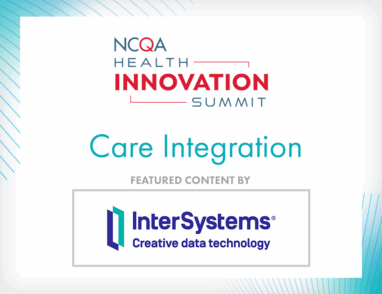Introducing: NCQA on FHIR
October 5, 2022 · Andy Reynolds
People in health care are learning about Fast Healthcare Interoperability Resources (FHIR®)—bedrock technology for measuring quality.
As the first post in a new blog series, “NCQA on FHIR,” here’s how NCQA Chief Technology Officer, Ed Yurcisin, introduces FHIR to nontechnical staff at NCQA.
Why FHIR?
Let’s start with the basics: What problem are we trying to solve?
In a word: Interoperability. We need it! We need computer systems to be able talk to each other and share data.
Health care is swimming in data. The challenge is connecting to and getting the most value from data.
Different EHRs use different methods to capture and store clinical data, which means data are locked away in silos. Lack of interoperability stands in the way of comprehensive, complete patient records.
It also prevents more relevant, less burdensome quality measurement.
Fear Not, FHIR’s Not Scary
“Fast Healthcare Interoperability Resources” might sound complex, but it’s pretty simple.
“Fire” (as it’s pronounced) is four basic things:
- REST APIs: “API”—application program interface—helps software and systems interact. “REST”—representational state transfer—is a kind of software “architecture” that guides the API.
- JSON: Or JavaScript Object Notation, is the most common text format that APIs use to understand each other.
- Data Model: How different data elements are organized, and how data flow between elements.
- Value Sets: A range of values—like the choices in a pull-down menu. SNOMED, RXNORM and LOINC codes are value sets relevant to FHIR.
To drive the point that FHIR isn’t complicated, Ed tells colleagues: “My son is in high school. He’s taking AP Java. And he is learning about REST API and JSON. So this isn’t craziness. This is high school-level computer science.”
The Basic Building Blocks: “Resources”
The fundamental, elemental units in FHIR are called resources. Here are examples:
- Conditions
- Encounters
- Medications
- Observations
- Patient
- Procedure
- Practitioner
FHIR has 145 resources but they’re not all used in health care—at least not in health care for people. FHIR veterinary resources exist, which means there are FHIR resources relevant to your dog that organizations like NCQA ignore.
The number of resources can evolve. That’s up to our colleagues at HL7—an organization that:
- Publishes and manages FHIR.
- Offers FHIR training.
- Co-hosts NCQA’s Digital Quality Summit.
Want to learn more about FHIR and its relevance to digital quality measurement? We’ll tell you all about it in future editions of our NCQA on FHIR blog series.
Want to learn more about Ed Yurcisin? We’ve summarized his background and interviewed him on our podcast. He’s terrific at making technology feel more human. Contact our Speaker’s Bureau if you’d like to invite Ed to speak.







